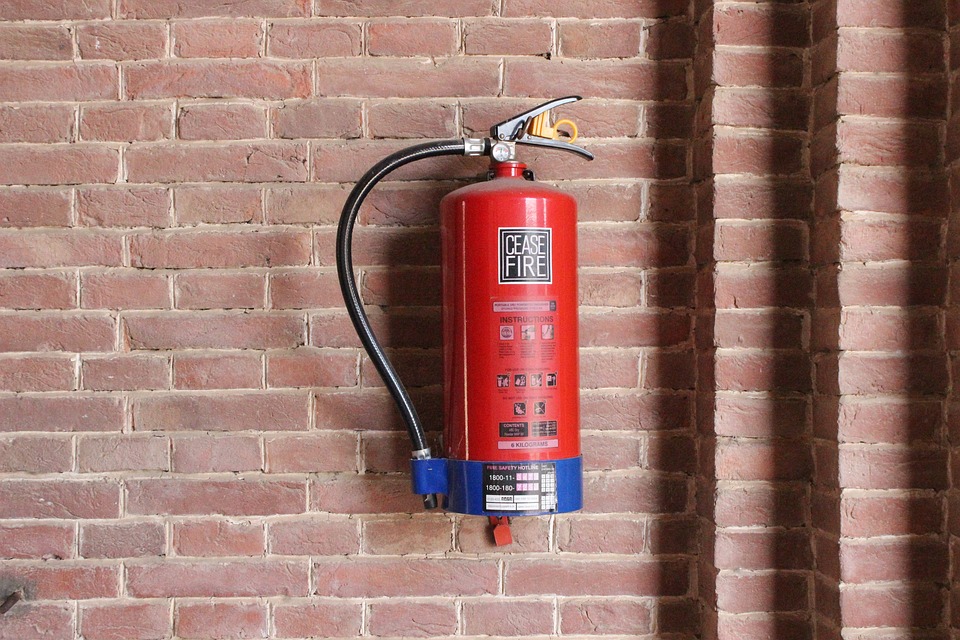The catastrophic effects of a fire should never be underestimated. As a business owner, spending time to conduct a risk assessment and identifying the most appropriate fire extinguishers for your business place is critical. By having fire safety equipment present on your business premises, you provide a secure environment to those working inside and the property itself. Not to mention, it’s also mandatory according to the law in many establishments.
However, you can’t just go online and order the first fire extinguisher you come across. That’s because not all extinguishers are created equal. Different types of fire extinguishers serve different purposes. To help you choose the right one, our Utah fire restoration specialists have helped put together this guide describing the different types of extinguishers.
Have you noticed different color codes and letters on this equipment? Do you wonder what they all imply? Look no further! This post deciphers those labels, too.
Fire Extinguisher Classes
Before anything else, it’s crucial to understand the meaning of those “class” labels/ratings on fire extinguishers. The labels are there to indicate which fire classes the equipment is designed to combat. Most fires are divided into the following classes:
Class A
Solid combustibles like paper, cloth, rubber, plastic, and wood fuel Class A fires. Class A extinguishers are appropriate for bookstores and furniture companies. These extinguishers are typically air-pressurized with water to combat ordinary Class A fires. Some variants are equipped with a detergent to produce water foam and effectively smother and cool the flames.
Class B
These fires light up due to flammable liquids such as petroleum, oil, and gasoline. Sometimes, paints, solvents, and propane also fuel Class B fires. Home improvement stores and gas stations can benefit from investing in Class B fire extinguishers. You’ll either find foam, CO2, or dry powder in class B extinguishers. Each of these materials is effective at putting out the fire and helping to prevent re-ignition.
Class C
Fires resulting from faulty energized electrical equipment like wiring, fuse boxes, machines, and control panels are classified as Class C fires. Extinguishers labeled Class C can be a good investment for electronics or washing machine stores. You can also use multi-purpose and CO2 extinguishers to put out class C fires. With CO2, the extinguisher’s content displaces the fire’s oxygen and reduces the temperature through coolness so the fire can no longer survive.
Class D
Any fire involving metals plus shavings, combustible powders, or metal flakes like titanium, potassium, sodium, and magnesium is classified as Class D. Laboratories and biotech companies would reap the most benefits from keeping Class D fire extinguishers on their premises. These extinguishers contain a special powder that makes them effective on lithium metal fires. However, they’re ineffective against liquid electrolytes and other fire types.
Class K
Fires fueled by kitchen combustibles, such as fats, oils, and grease, are known as Class K fires. Class K fire extinguishers are best suited for restaurants and home catering businesses. The smothering agents present in these extinguisher variants range from a fine mist in wet chemical versions to potassium bicarbonate in dry chemical extinguishers. The dry and wet chemicals help to combat the high temperature and flames of combustibles.
You’ll find that every fire extinguisher has a label to indicate the class of fire it can put out. Household extinguishers that can put out multiple fires are often labeled to combat Class A, B, and C fires. These extinguishers contain dry chemicals that use a retardant powder to coat the fire, choking the oxygen from it and disrupting the chemical reaction required for burning the fuel source. Class K extinguishers are designed for heavier use and may cost more than the household variants.
Some extinguishers carry labels that feature symbols to inform what type of fire the equipment can fight effectively. If a certain symbol has a circle and a red slash through it, it implies that the user cannot use the equipment to put out that particular fire.
Additionally, extinguishers are “rated” for the size of fire they are effective against. Higher rated extinguishers can put out larger fires, and they’re often heavier than the low-rated variants. Class A fires have a 1-40 rating, and the rating for Class B fires is 1-640. Class C fires don’t have a size rating. Make sure to invest in an extinguisher that you can comfortably handle and keep in your office building.
Fire Extinguisher Size and Weight
When choosing an extinguisher, it’s also crucial to keep room size in mind and how fast the fire could spread throughout the area. 10-pound fire extinguishers are ideal for commercial warehouses, spaces, and workshops where hazardous equipment might be stored. If you’re looking for an extinguisher for typical office space, a lighter, 5-pound variant should be enough for the job. There are also 2-pound extinguishers available on the market. These are best for trucks and cars.
You should also consider the physical capabilities of the people working in your office. Larger extinguishers contain more firefighting agents, which makes them heavier to handle.
Refillable vs. Disposable Extinguishers
Extinguishers are either disposable or refillable. The kind you buy will depend on how frequently you expect to use the equipment. If you purchase a disposable model, you will discard it after its repellent runs out and replace it with a new unit. In contrast, refillable extinguishers can be refilled and reused repeatedly. This kind costs more than the disposable one, so you might want to forecast how regularly you will need to use the equipment.
Hopefully, all of this information will help you identify the right fire extinguisher for your business. After the purchase, be sure to train yourself and others on how to use the equipment properly. Google the PASS technique if this is going to be your first experience with fire extinguishers.

